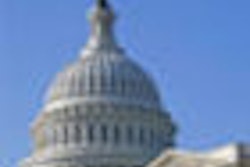
Academics, private and public health dentists, hygienists, representatives from the Michigan Dental Association and the ADA, and community health groups gathered at the University of Michigan last month to explore ways to improve access to care for the underserved.
The one-day conference, "Increasing Access to Oral Health Care in Michigan: A Discussion of Three Possible Solutions," was sponsored by the university's School of Social Work.
The three solutions discussed were midlevel providers, collaboration with other healthcare providers, and increased utilization of existing practice modes.
Not surprisingly, some of the most heated discussions revolved around the potential role of midlevel providers.
"The issue of midlevel providers was the most controversial, but it was a very balanced presentation with healthy debates on both sides," said Frank Catalanotto, DMD, chairman of the department of community dentistry and behavioral science at the University of Florida College of Dentistry, who attended the conference.
But Jon Holtzee, director of the ADA Department of State Government Affairs, called the midlevel provider concept "disruptive change."
The ADA has staunchly opposed allowing nondentists to perform irreversible/surgical dental procedures. On September 9, the ADA sent out a members-only bulletin urging its members to contact their legislators and ask them not to fund the Alternative Dental Health Care Providers Demonstration Project provision that is part of the healthcare reform act.
Michigan's dental practice act allows for expanded duties by hygienists and assistants in assisting dentists while performing restorations, and some of the proposals recommended better use of them.
And in 2005, Michigan legislators passed a law allowing hygienists to apply fluoride varnishes and sealants without the direct supervision of a dentist; the program has been a great success, noted Kathleen Inman, RDA, RDH, president of the Michigan Dental Hygienists' Association.
Increased collaboration urged
While the oral health of the nation's children has generally improved, more younger children now have caries, noted William Maas, DDS, MPH, who serves as a consultant for the Pew Children's Dental Campaign. At least half of U.S. schoolchildren (ages 5 through 19) are now caries-free, Dr. Maas said. But caries has increased among children ages 2 to 5, and one-third of kids ages 6 to 8 have untreated caries in a permanent tooth.
Under the provisions of the Affordable Care Act, the Children's Health Insurance Program will be preserved through 2019, with increased funding by the federal government, Dr. Maas told conference attendees. In addition, health insurance purchased through exchanges will be required to cover dental care, and 5.3 million more children will have dental care coverage in 2014, he noted.
Increased collaboration between oral healthcare providers and other care providers can be an effective way of improving access to dental care and can improve the ability to identify treatment needs, several presenters noted.
For example, Medicaid reimburses medical doctors, physician assistants, and advanced registered nurse practitioners for dental screening exams of children, risk assessment for early childhood caries, fluoride varnish applications, parental education, and attempted referral to a dentist, Dr. Catalanotto noted.
Dentists also are reimbursed for providing such services, but not enough will take Medicaid-eligible children, he added.
Medical doctors are often the ones most likely to see the negative effects of early childhood caries, Dr. Catalanotto explained.
"They're the ones who get the Saturday night calls for 2- or 3-year-olds with a swollen face and elevated temperature," he said.



















